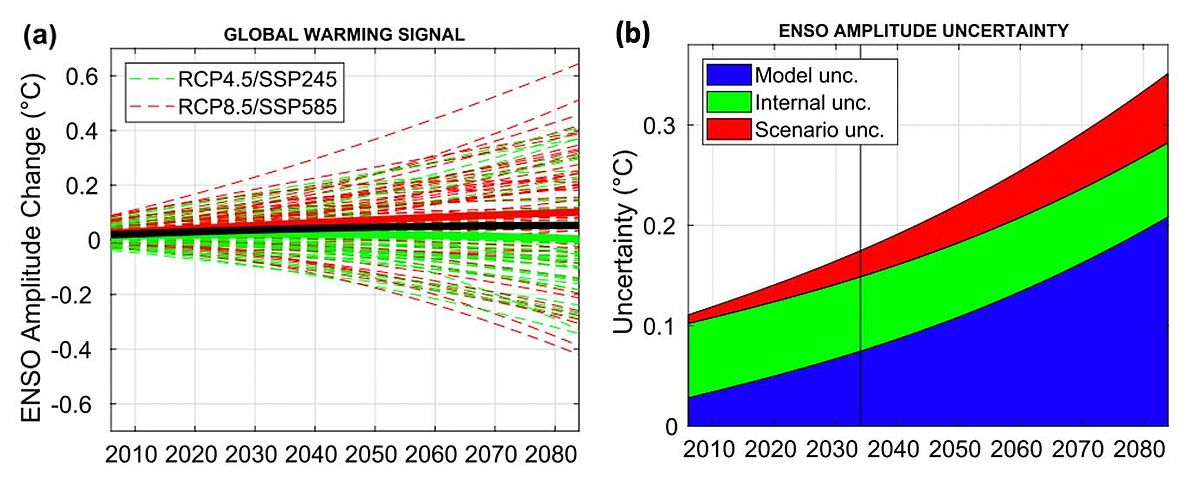Uncertainty of ENSO‑amplitude projections in CMIP5 and CMIP6 models
There is a long-standing debate on how the El Niño/Southern Oscillation (ENSO) amplitude may change during the twenty-first century in response to global warming. Here we identify the sources of uncertainty in the ENSO amplitude projections in models participating in the Coupled Model Intercomparison Phase 5 (CMIP5) and Phase 6 (CMIP6), and quantify scenario uncertainty, model uncertainty and uncertainty due to internal variability. The model projections exhibit a large spread, ranging from increasing standard deviation of up to 0.6 °C to diminishing standard deviation of up to − 0.4 °C by the end of the twenty-first century. The ensemble-mean ENSO amplitude change is close to zero. Internal variability is the main contributor to the uncertainty during the first three decades; model uncertainty dominates thereafter, while scenario uncertainty is relatively small throughout the twenty-first century. The total uncertainty increases from CMIP5 to CMIP6: while model uncertainty is reduced, scenario uncertainty is considerably increased. The models with “realistic” ENSO dynamics have been analyzed separately and categorized into models with too small, moderate and too large ENSO amplitude in comparison to instrumental observations. The smallest uncertainties are observed in the sub-ensemble exhibiting realistic ENSO dynamics and moderate ENSO amplitude. However, the global warming signal in ENSO-amplitude change is undetectable in all sub-ensembles. The zonal wind-SST feedback is identified as an important factor determining ENSO amplitude change: global warming signal in ENSO amplitude and zonal wind-SST feedback strength are highly correlated across the CMIP5 and CMIP6 models.

Reference:
Beobide Arsuaga, G., T. Bayr, A. Reintges, and M. Latif, 2021: Uncertainty of ENSO-amplitude projections in CMIP5 and CMIP6 models. Clim. Dyn., doi.org/10.1007/s00382-021-05673-4.


